Many will not forget the weekend of October 29th, 2010 when Hurricane Tomas wreaked havoc on the Eastern Caribbean island of St. Lucia - dumping heavy rains which caused severe flooding and mudslides and left in its wake the pain of death and the loss of property and livelihood. For those who told the stories then and certainly for those who are still telling them today, the experience was both traumatic and shocking, not only because the island had not recently experienced a hurricane of the magnitude that caused, by one account, approximately 14 lives to be lossed; nor because the last major hurricane that the island experienced had passed too long ago for the people to still be in a state of preparedness or be too concerned about the likelihood of another occurring anytime soon. No, when people tell the stories, most of them are likely to say that they were surprised because they were not even aware of a hurricane warning. Not that one wasn't given - when and by what means is another issue entirely.
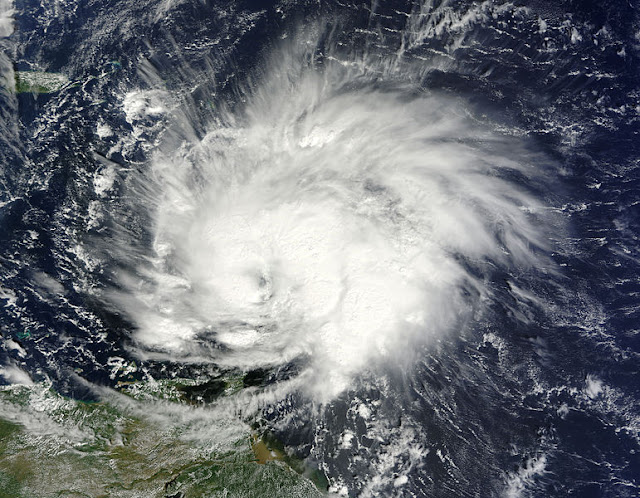
Tomas shortly after intensifying into a hurricane
The fact is, if you are born and raised in the Caribbean, one piece of knowledge you acquire about living here is that there are two seasons: the wet season and the dry season. You also know that hurricanes are most likely to develop in the Atlantic Hurricane Season which runs from June 1st to November 30th. Afterall, a fair number of hurricanes have passed throughout Caribbean waters, certainly in the past six years, causing devastation in the islands: from Hurricane Ivan in 2004, Emily in 2007 and Gustav in 2008.
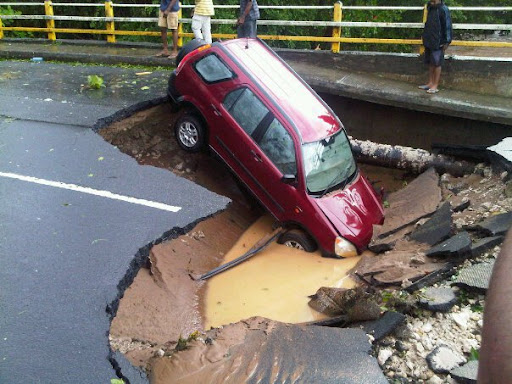
A bridge that takes vehicular traffic to and from the North of the island to the capital city Castries collapses as a car passes.
Notwithstanding, the likelihood of St. Lucians calling all this to mind would have decreased with all the festivities surrounding the recently held Jeunon Kweyol celebrations. What's more, Tomas put in his appearance on a friday evening, when many persons would have already assumed the normal positions at various friday-night-lyming spots, particularly at the weekly held Gros Islet street jam in the North. On my way home from work that Friday evening, the skies were undoubtedly overcast. However, the thought of an impending hurricane was the furthest from my mind. I became convinced that something was amiss only when it started raining continuously that evening because I had never seen it rain for more than 10 minutes in Gros Islet since I had been there.
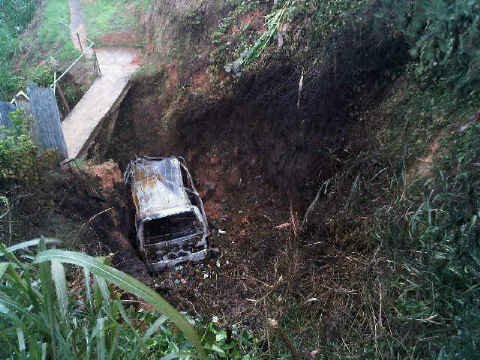
Another vehicle is washed over a precipice by flood waters.
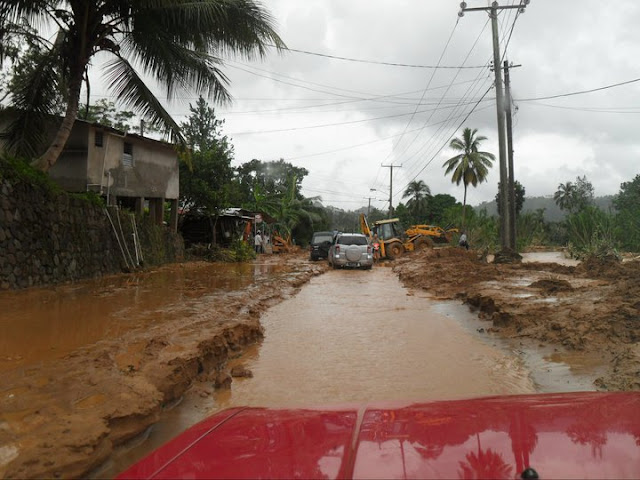
The roadways are reduced to mud and rubble.
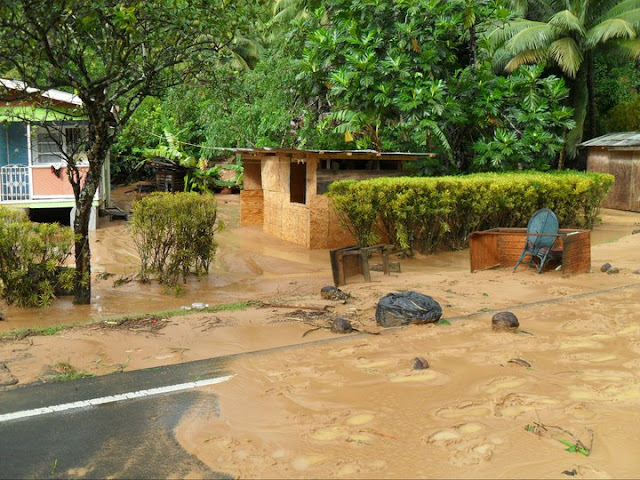
This yard is inundated by muddy water, forcing the family to seek higher ground.
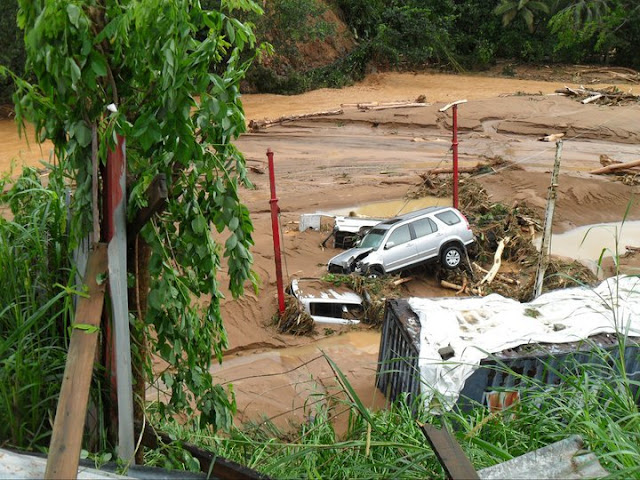
What was once a road is covered by mud and debris.
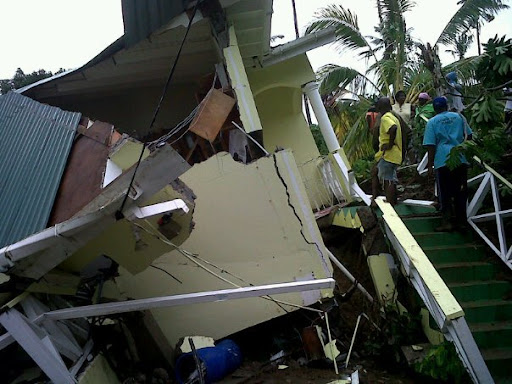
This family's house suffered complete destruction from the hurricane.
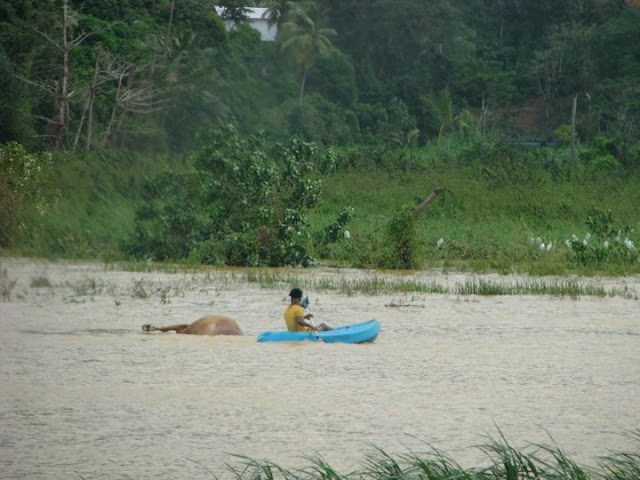
A farmer tries to save his drowing cow by wading across a "river" that was once a field where cows grazed.
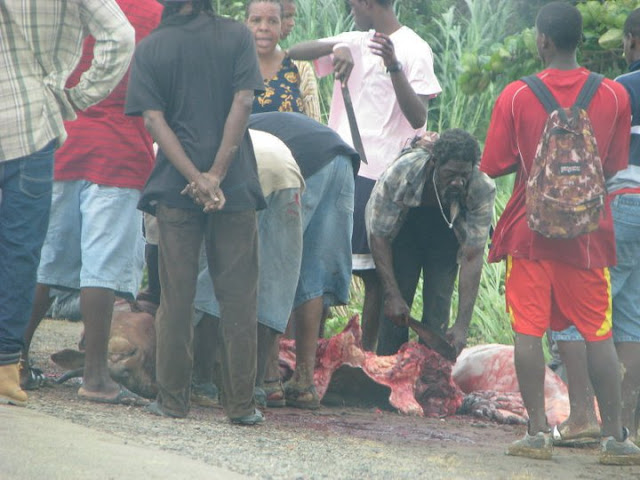
Another farmer, realizing the loss of his livelihood, slaughters his drowned cow by the roadside while others look on.
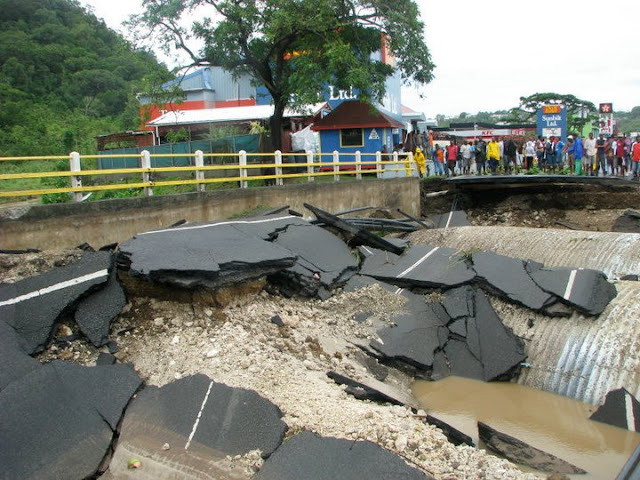
One of the major roads could not stand up to the heavy winds and rains.
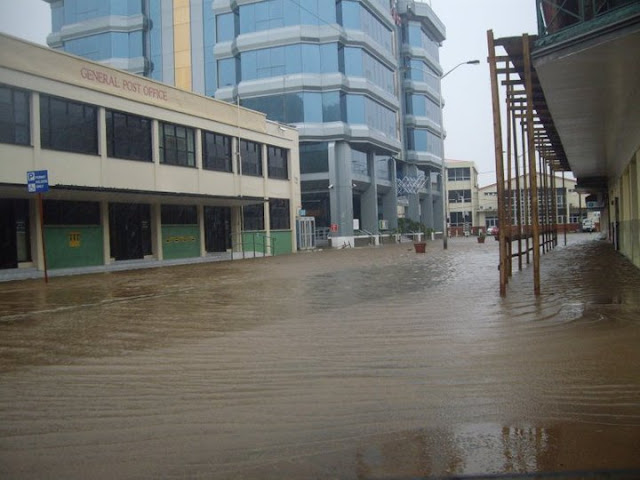
The capital city Castries under water. In the background is the Bank of St. Lucia.
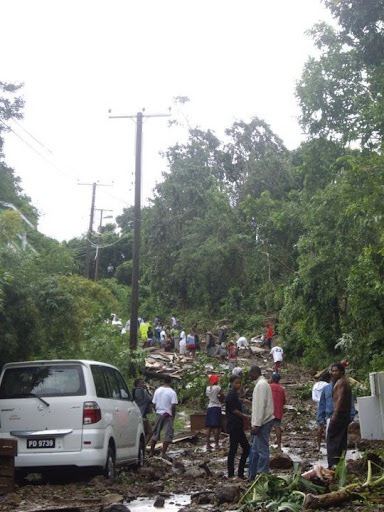
The mountains slid down onto the roads in this community, causing access to houses difficult.
When you are a visitor to any country, the last thing you wish to happen is any form of disaster. Luckily for me I had been through my fair share of storms and hurricanes in Jamaica, so the experience was not as frightening as it could have been had I not had this experience. Additionally, I live in the North and although most of the island was affected in some way, the south was arguably the worst affected, with several persons being declared missing or buried in mudslides. My greatest shock came after seeing the photos of the damage and wondering if I was in another St. Lucia.

The empty supermarket shelves where bottled water once was.
While having no light during the hurricane became a bother, the real test came after the hurricane passed on Sunday, when having no water to drink, bathe, wash, cook or flush toilets became a nuisance. Despite this, I was extremely grateful that I did not have to relocate from my house, nor stand in waist-high water, nor shovel mounds of mud from my yard, nor watch my roof being lifted off by the wind, nor sleep in a bed saturated by rain.

This house suffered considerable damage from Tomas
Ironically, from this experience it would appear that I am or am becoming the "storm-bringing" intern. While interning in Dominica in 2008, storm surges associated with the passage of Hurricane Omar caused widespread flooding and significant coastal damage in some areas. About 30 families from the west coast were homeless. The community of Scotts Head in the south, close to Soufriere where I lived, was cut off from the rest of the country for a few days because the coastal road to that community was extensively damage. Many fishermen from the entire west coast also lost boats, boat houses, engines and fishing gear.
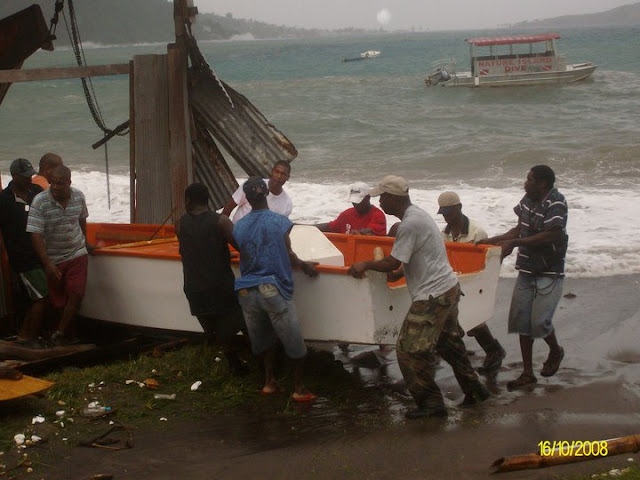
Hurricane Omar: Fishermen securing their boats from the waters that threaten to wash them away. On that morning I woke up to the sound of conch shells - a signal that fishermen use to warn the neighbourhood of impending disaster. Conch are large sea snails with a hard shell that can be made into a wind instrument by cutting a hole in the spire of the shell and blowing into it.
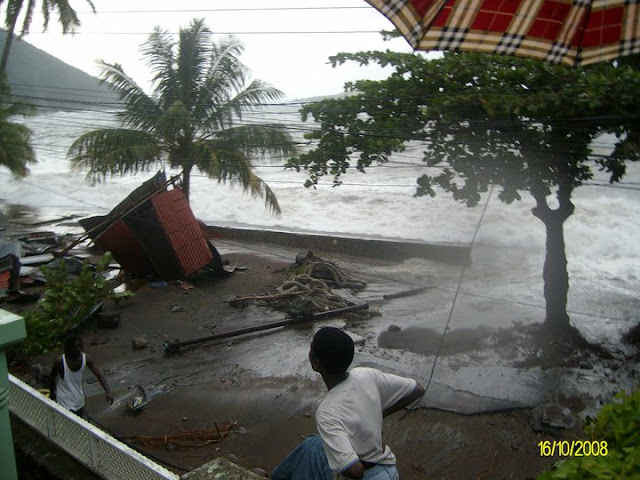
Some of the damage caused by the dangerous-looking waters in the background as Hurricane Omar passes.
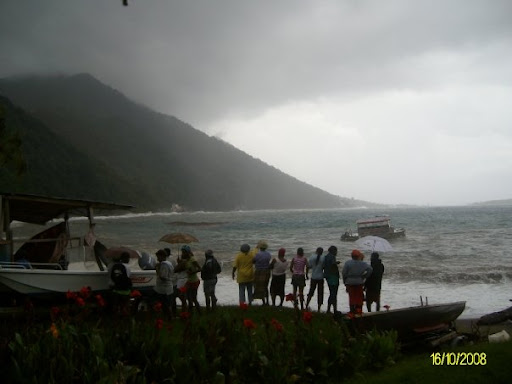
Members of the coastal community of Soufriere in Dominica look on at the rough sea as Hurricane Omar lashed the coastline with strong waves.
Marion Robinson
International Internship Editor,
Wandering Educators
